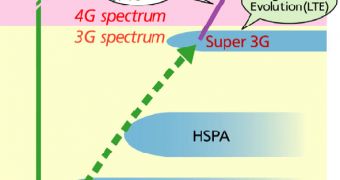NTT DoCoMo, the largest mobile operator in Japan, today announced it has achieved a stunning performance in terms of data transfer speeds over a wireless network. The Japanese carrier performed several outdoor tests with an experimental Super 3G mobile network and recorded a maximum downlink transmission rate of 250 Mbps. This high data transfer speed basically means that someone can use a mobile phone to download a full-length movie, for example, in just a few seconds.
To get a better clue of what 250 Mbps means for a handset, you should know that, in Europe and North America, a 7.2 Mbps transfer speed is considered a high one. Therefore it's no wonder the network NTT DoCoMo works with is called Super 3G.
Featuring advanced spectrum efficiency and low-latency data transmission, the Super 3G technology is far more evolved than HSDPA (High-Speed Downlink Packet Access) and HSUPA (High-Speed Uplink Packet Access). Also known as LTE (Long Term Evolution), Super 3G will be deployed in Japan starting 2009, although the costs for this kind of network will be huge.
Regardless of the deployment date, Super 3G (as well as all the other better-than-2G technologies) clearly represent the future of the global mobile industry. 2G phones are actually disappearing from Japan, as not a single 2G handset was sold there during January 2008, and they are already obsolete in South Korea. This is also imminent to happen all over the world, even if it will take a few (or a few more) years.
NTT DoCoMo will bring more details about Super 3G during the approaching CTIA Wireless show, which will be held in Las Vegas between 1 and 3 April. For the moment, we (meaning the non-Japanese residents) can only hope that we'll get to enjoy the today-announced data transfer speeds on our handsets before getting old.

 14 DAY TRIAL //
14 DAY TRIAL //